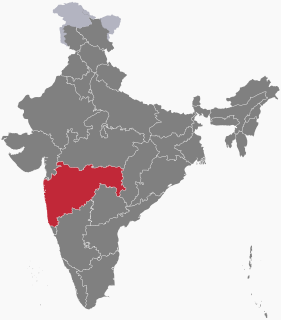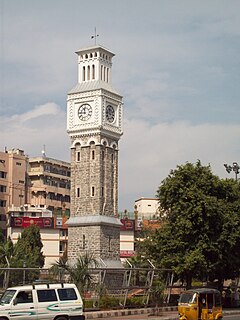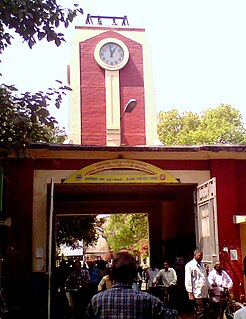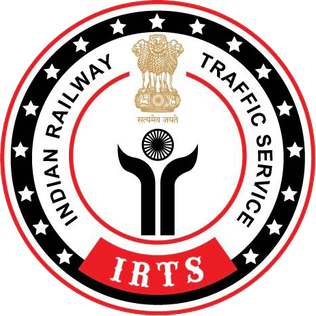| Established | 1988 |
|---|---|
| Location | Nashik |
| Website | IRIEEN Nashik |
Indian Railways Institute of Electrical Engineering (IRIEEN), Nashik was set up by the Indian Railways at Nashik in Maharashtra for imparting training to newly appointed officers of Indian Railway Service of Electrical Engineers (IRSEE), recruited through Engineering Services Examination conducted by UPSC, New Delhi. The Institute was set up in the year 1988 at Nashik, Maharashtra. The Institute is headed by the Director. He is assisted by a team of Nine faculty members, who are having practical experience as well as technical qualifications. [1]

Indian Railways (IR) is India's national railway system operated by the Ministry of Railways. It manages the fourth largest railway network in the world by size, with 67,368-kilometre (41,861 mi) route.. Routes are electrified with 25 kV AC electric traction while thirty three percent of them are double or multi-tracked.

Nashik is an ancient holy city in the northwest region of Maharashtra in India. Situated on the banks of Godavari River, Nashik is best known for being one of Hindu pilgrimage sites, that of Kumbh Mela which is held every 12 years. It is the fourth largest city of maharashtra after Mumbai, Pune and Nagpur.

Maharashtra is a state in the western peninsular region of India occupying a substantial portion of the Deccan plateau. It is the second-most populous state and third-largest state by area in India. Spread over 307,713 km2 (118,809 sq mi), it is bordered by the Arabian Sea to the west, the Indian states of Karnataka and Goa to the south, Telangana and Chhattisgarh to the east, Gujarat and Dadra and Nagar Haveli to the north west, and Madhya Pradesh to the north. It is also the world's second-most populous subnational entity. It was formed by merging the western and south-western parts of the Bombay State, Berar and Vidarbha, and the north-western parts of the Hyderabad State and splitting Saurashtra by the States Reorganisation Act. It has over 112 million inhabitants and its capital, Mumbai, has a population around 18 million making it the most populous urban area in India. Nagpur hosts the winter session of the state legislature. Pune is known as 'Oxford of the East' due to the presence of several well-known educational institutions.
Contents
As laid down by the Railway Board, the Institute imparts training as a statutory measure to:
- IRSEE Probationers.
- Integrated orientation course for Group-B Officers in all aspects of the working of Electrical Department before their absorption in Group-A services.
- Senior Professional Development Course for Junior Administrative Grade officers prior to their being considered for promotion to Selection Grade.
In addition the above, short-term special courses are also being conducted throughout the year on specialized subjects with the latest technical know-how and as requests received from zonal railways.
The IRIEEN is one of six Centralised Training Institutes that share the task of training of officers. The other Centralised Training Institutes are:
- Indian Railways Institute of Transport Management, Lucknow for Indian Railway Traffic Service Officers recruited through the Civil Services Exam.
- Indian Railway Institute of Civil Engineering, Pune for civil engineers,
- Indian Railway Institute of Signal and Telecommunications Engineering, Secunderabad for engineers of S&T department,
- Indian Railway Institute of Mechanical and Electrical Engineering & Jamalpur Gymkhana, Jamalpur for mechanical engineers
- RPF Academy Lucknow, for officers of Railway Protection Force and
- Railway Staff College, Vadodara functions as the apex training institute for the officers of all departments in general and Accounts, Personnel, Stores, and Medical departments in particular.
Indian Railways Institute of Civil Engineering (IRICEN), Pune is the training institute for the Civil engineers of the Indian Railways. The institute had a modest start in 1959 as the Permanent Way Training School for training entry level Civil engineers. It is now a Centralised Training Institute and trains officers of the IRSE cadre of the Indian Railways.

Pune, formerly called Poona (1857–1978), is the second largest city in the Indian state of Maharashtra, after Mumbai. It is the ninth most populous city in the country with an estimated population of 3.13 million. Along with its Industrial Estate Pimpri Chinchwad and the three cantonment towns of Pune, Khadki and Dehu Road, Pune forms the urban core of the eponymous Pune Metropolitan Region (PMR). According to the 2011 census, the urban area has a combined population of 5.05 million while the population of the metropolitan region is estimated at 7.27 million.

Secunderabad is the twin city of Hyderabad located in the Indian state of Telangana. Named after Sikandar Jah, the third Nizam of the Asaf Jahi dynasty, Secunderabad was established in 1806 as a British cantonment. Although both the cities are together referred to as the twin cities, Hyderabad and Secunderabad have different histories and cultures, with Secunderabad having developed directly under British rule until 1948, and Hyderabad as the capital of the Nizams' princely state of Hyderabad.





